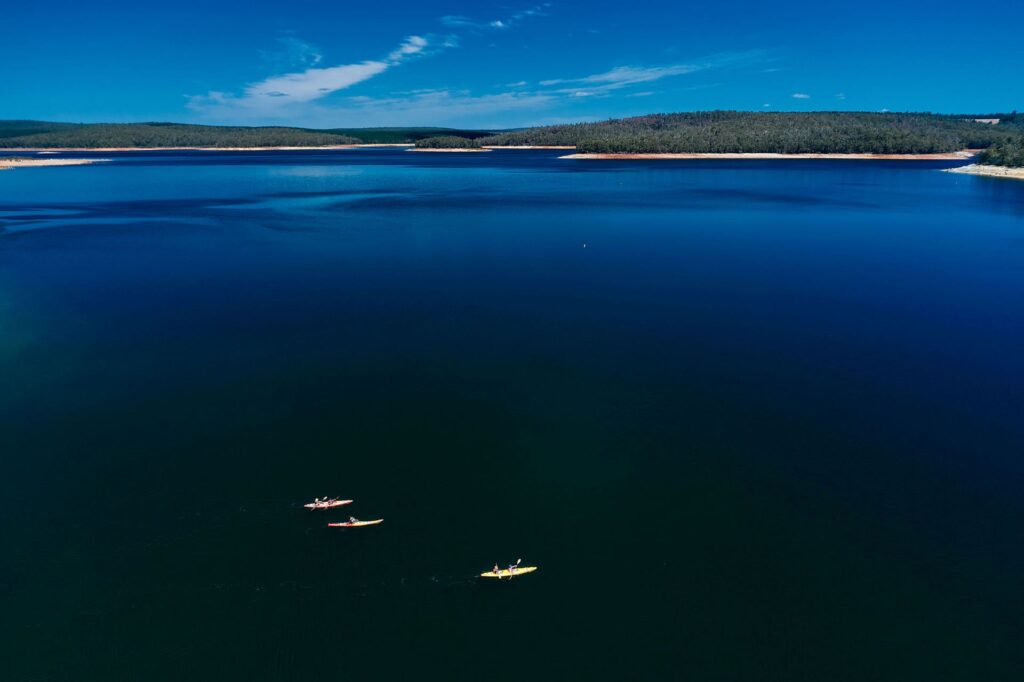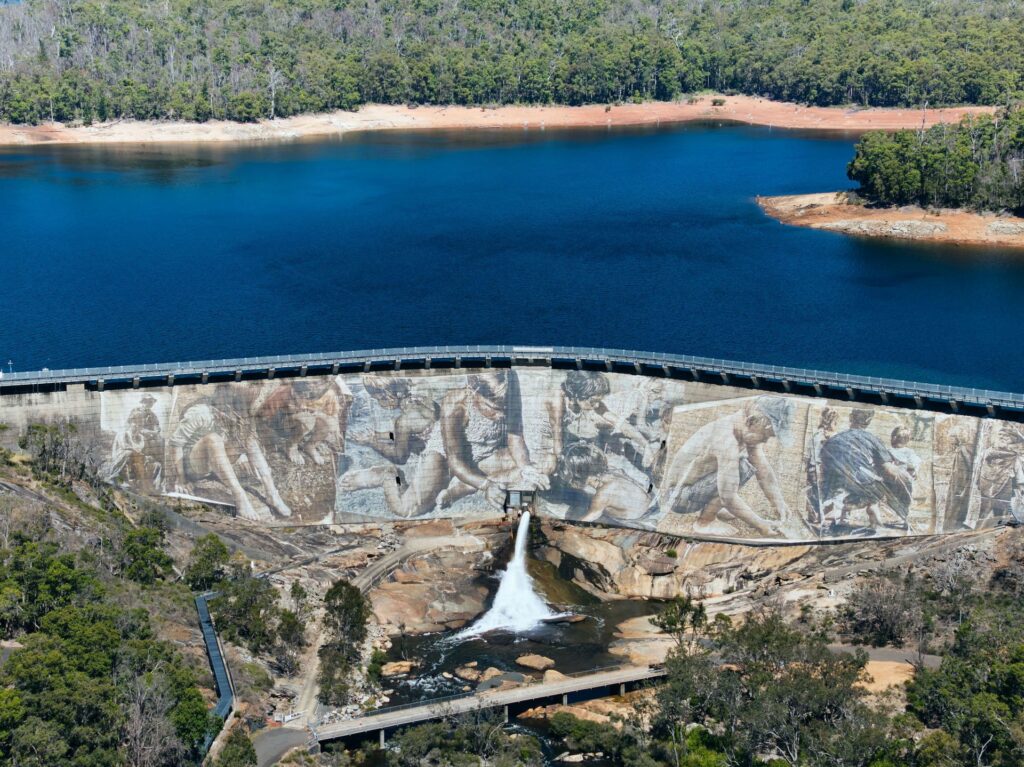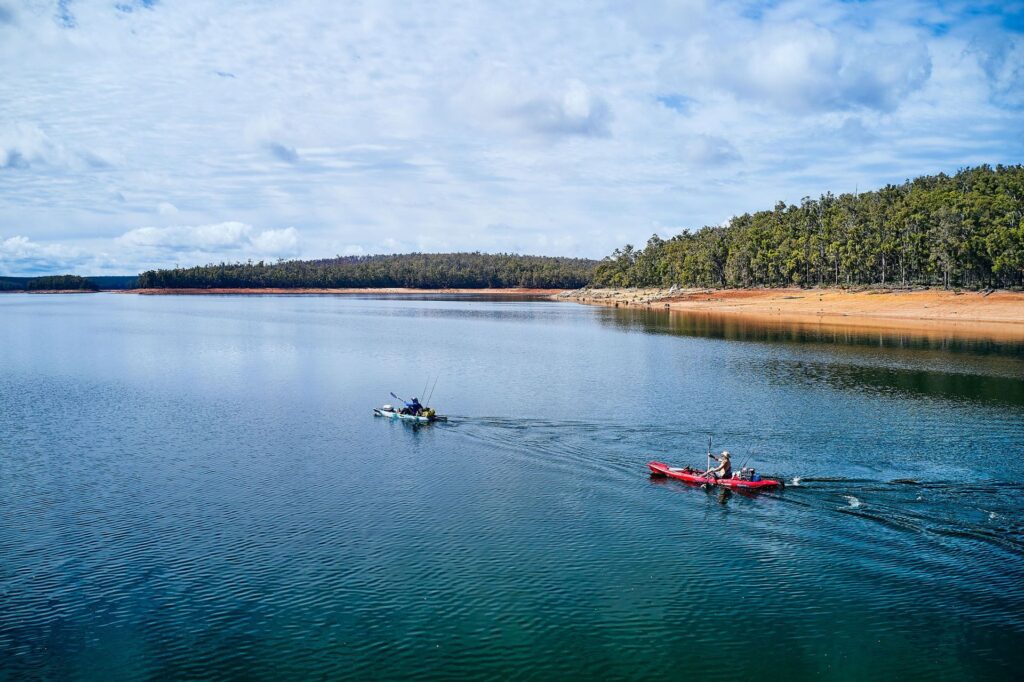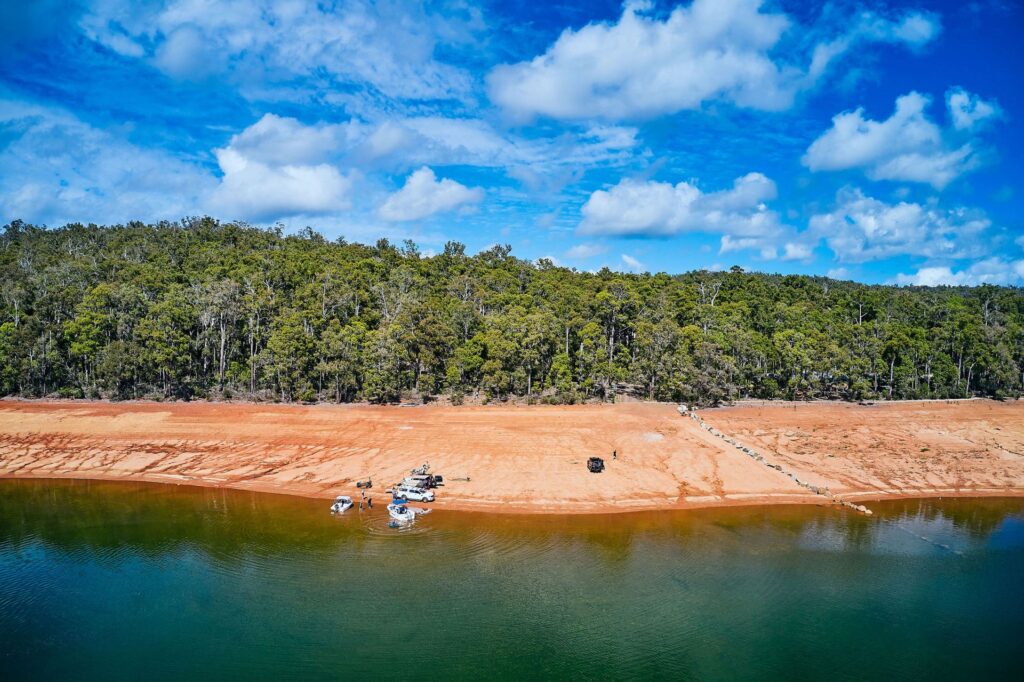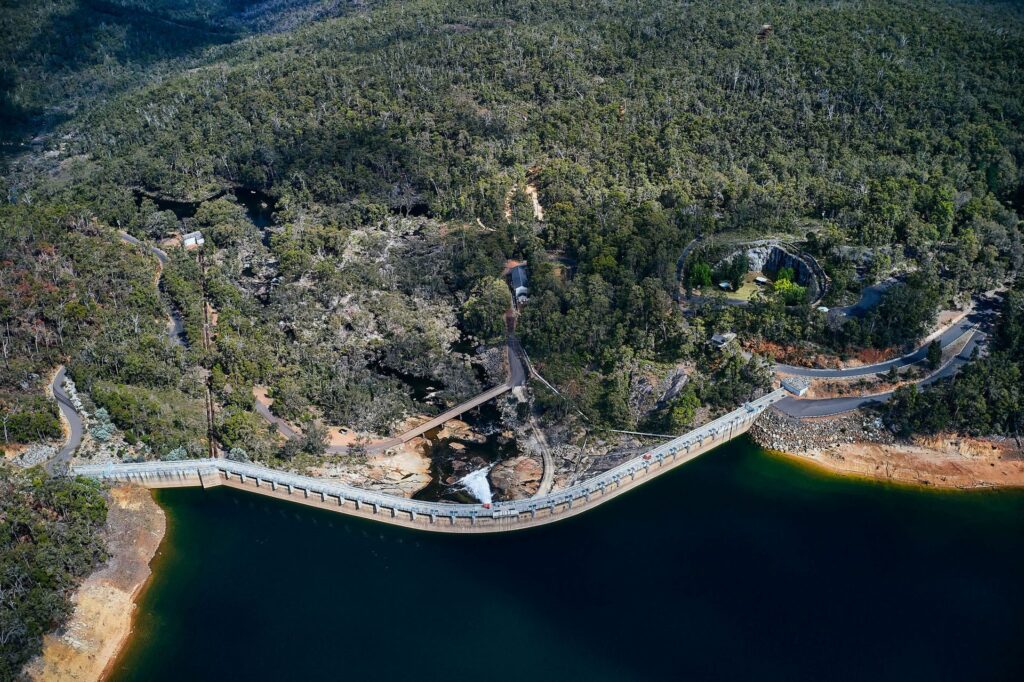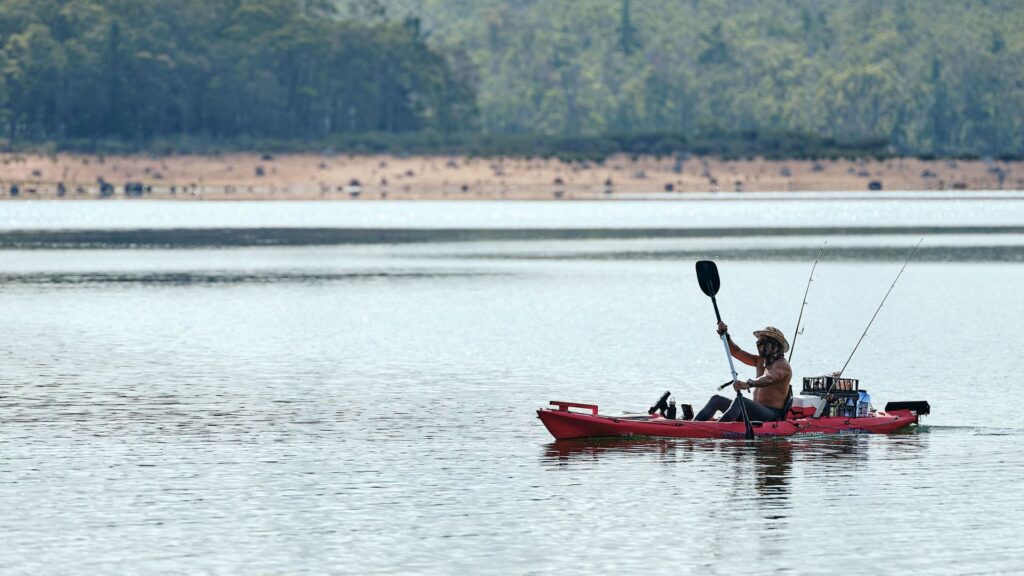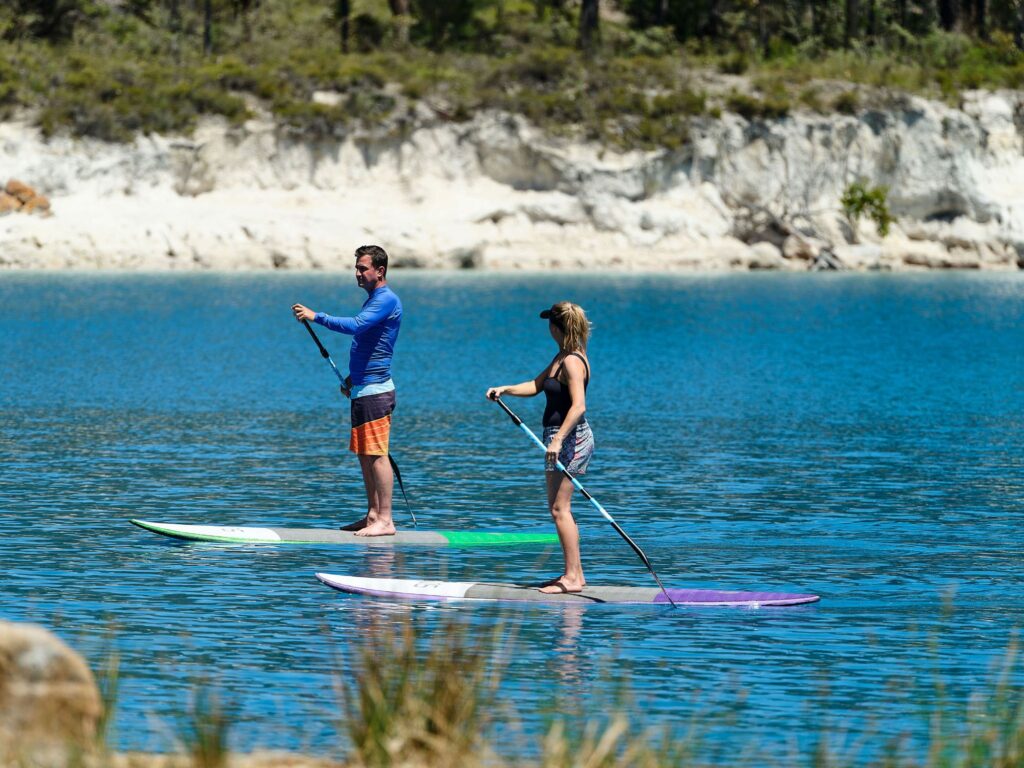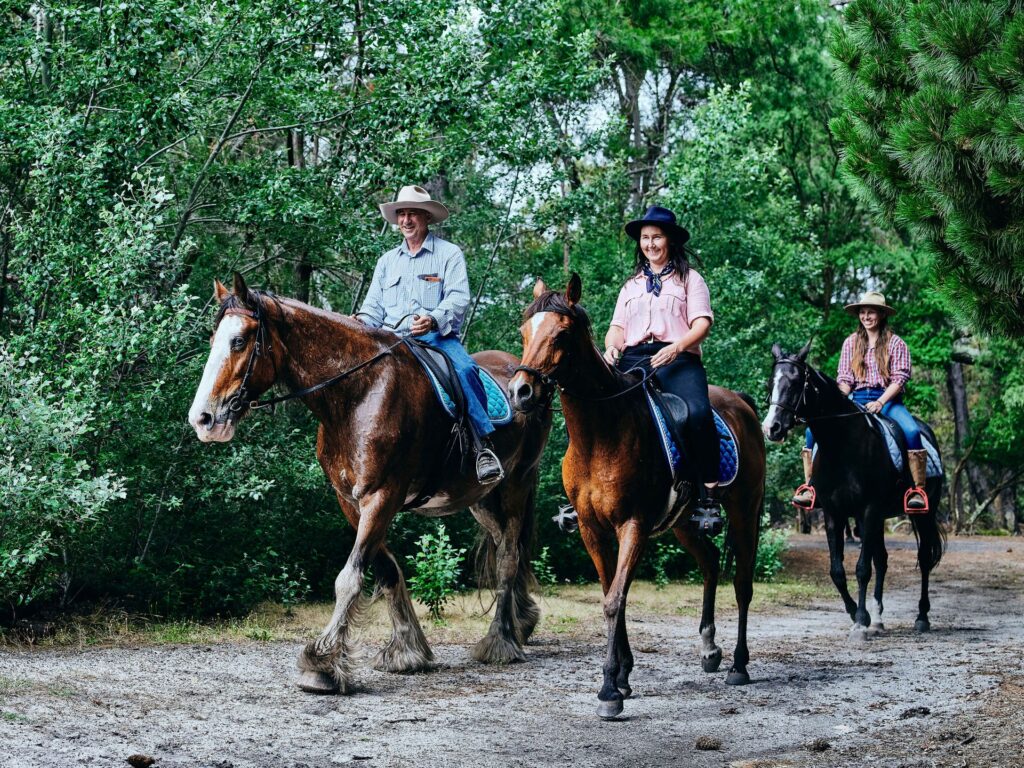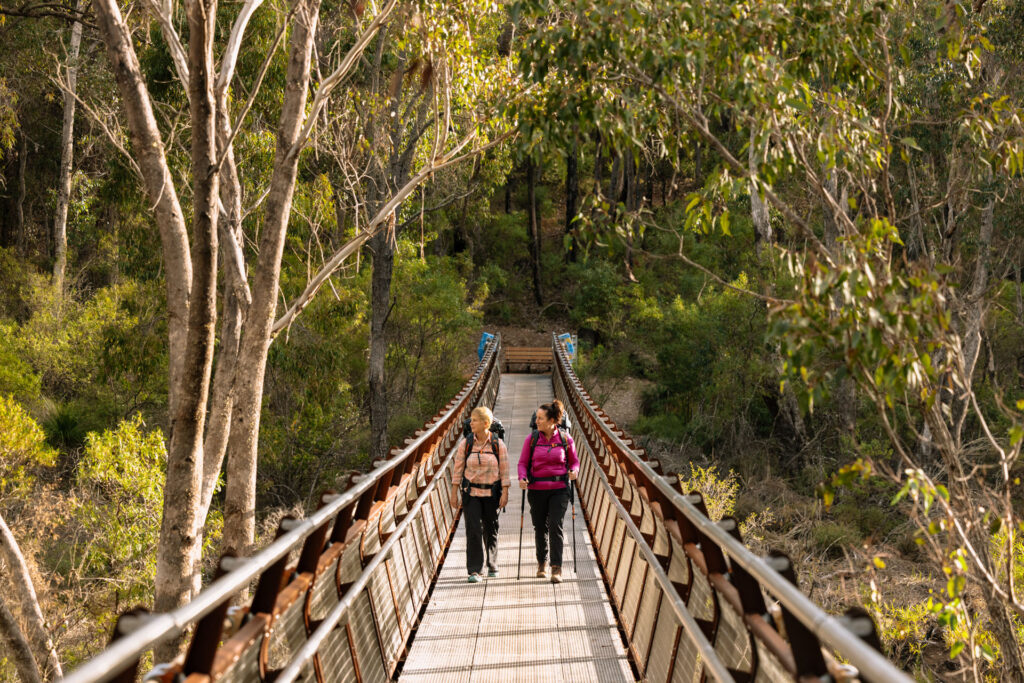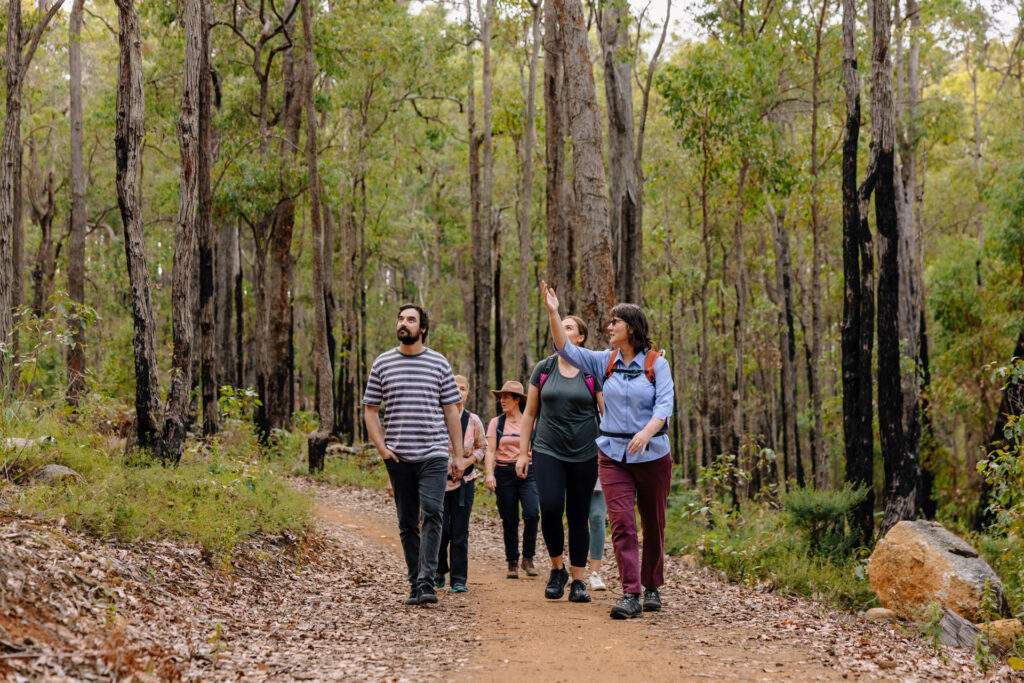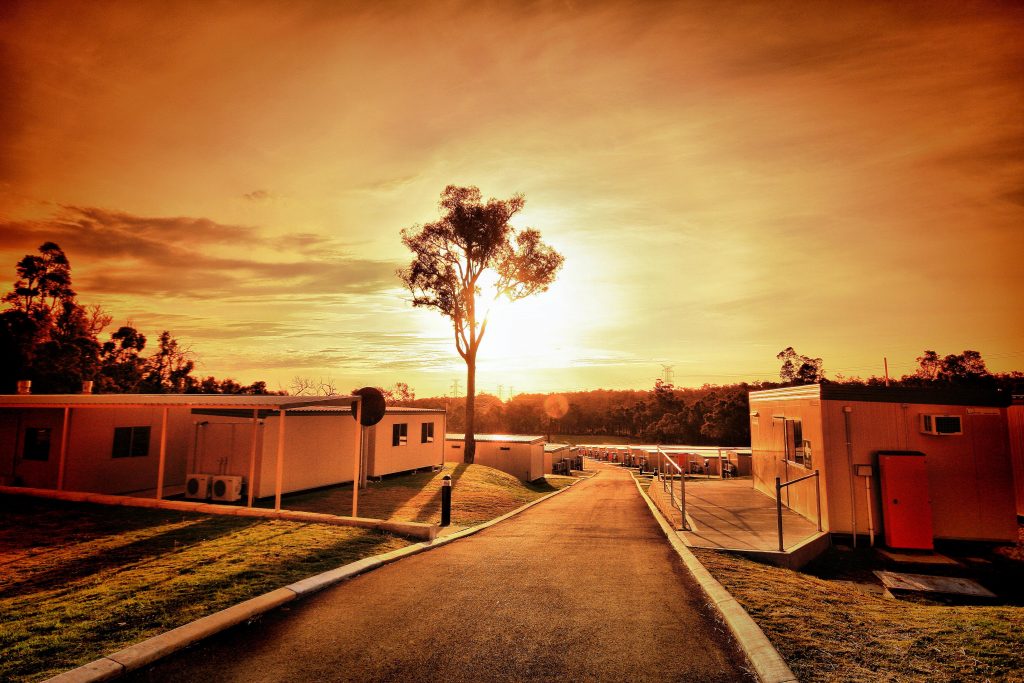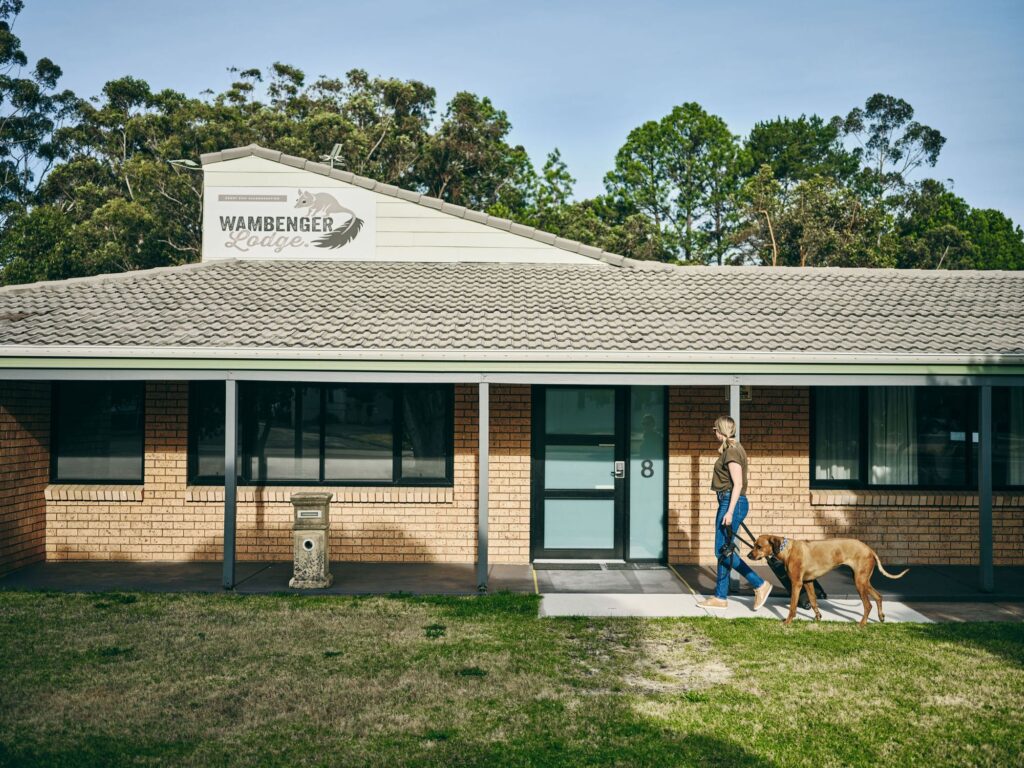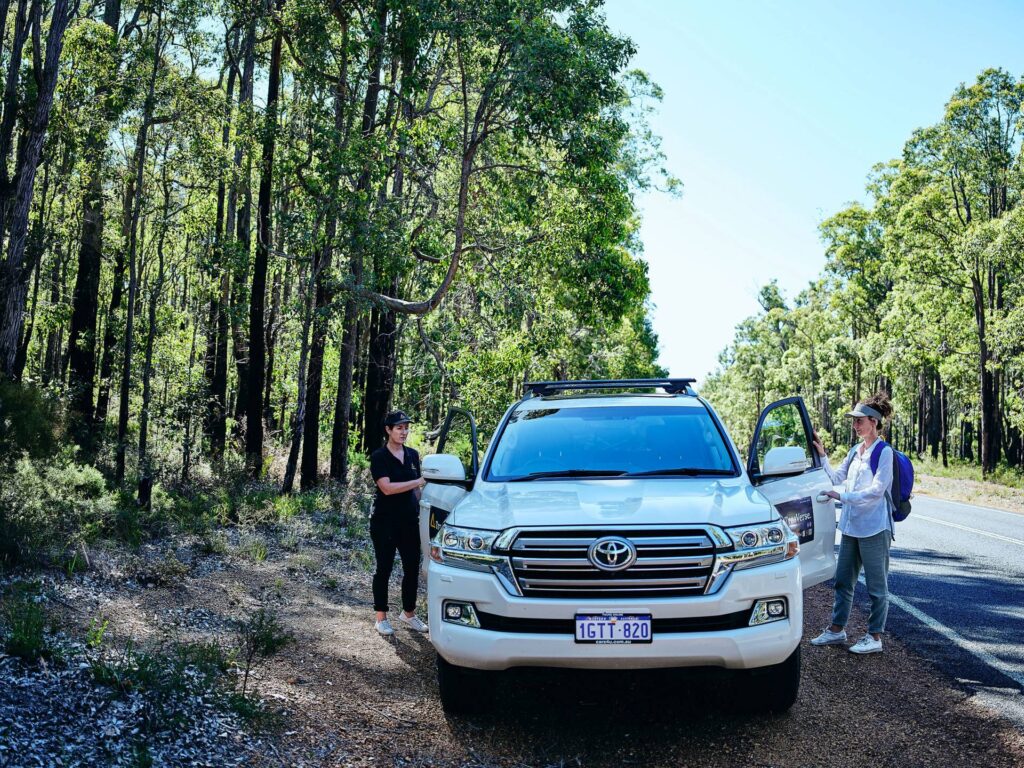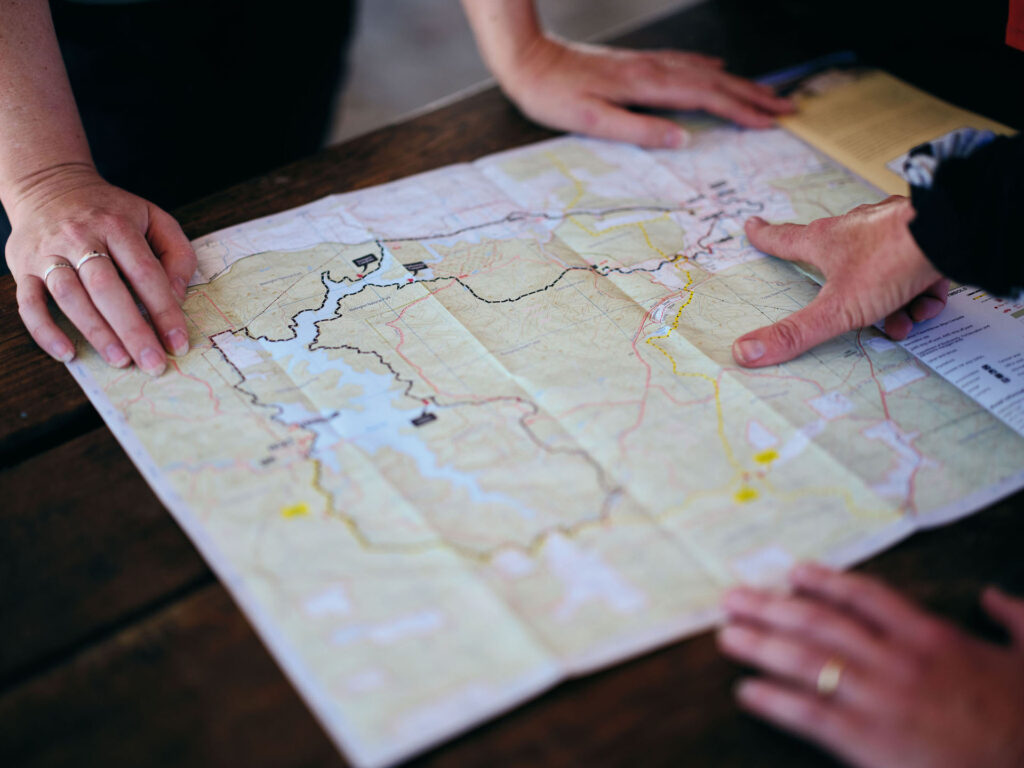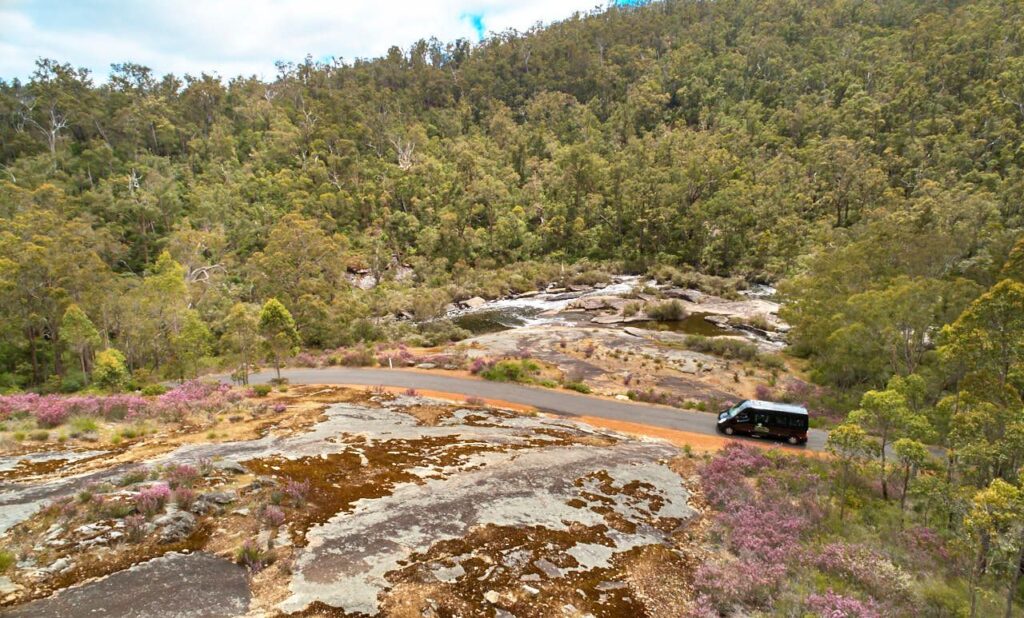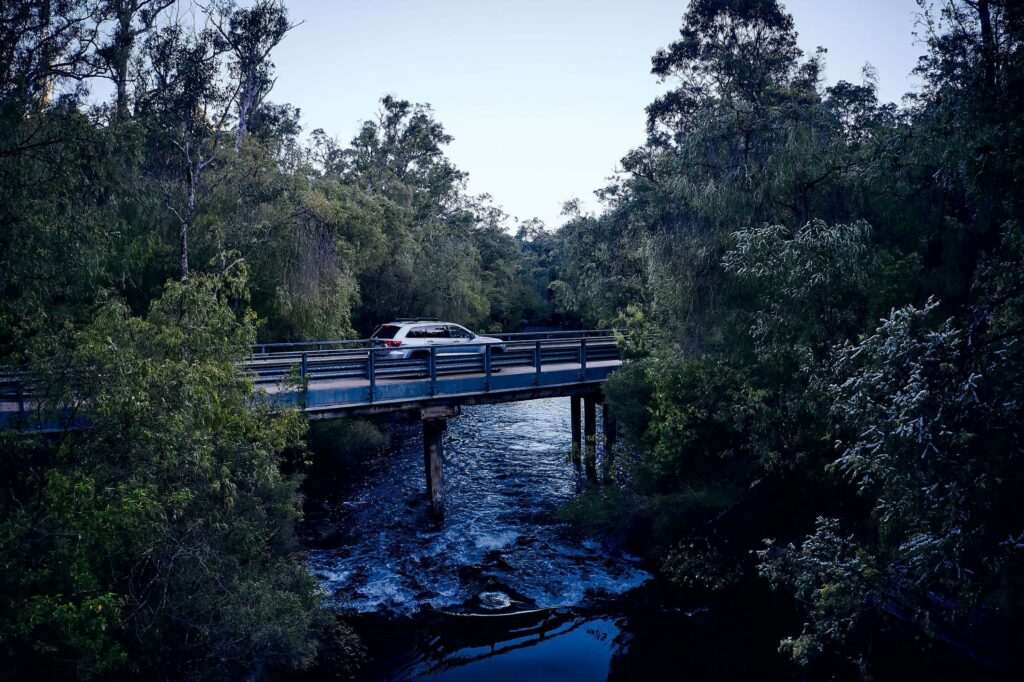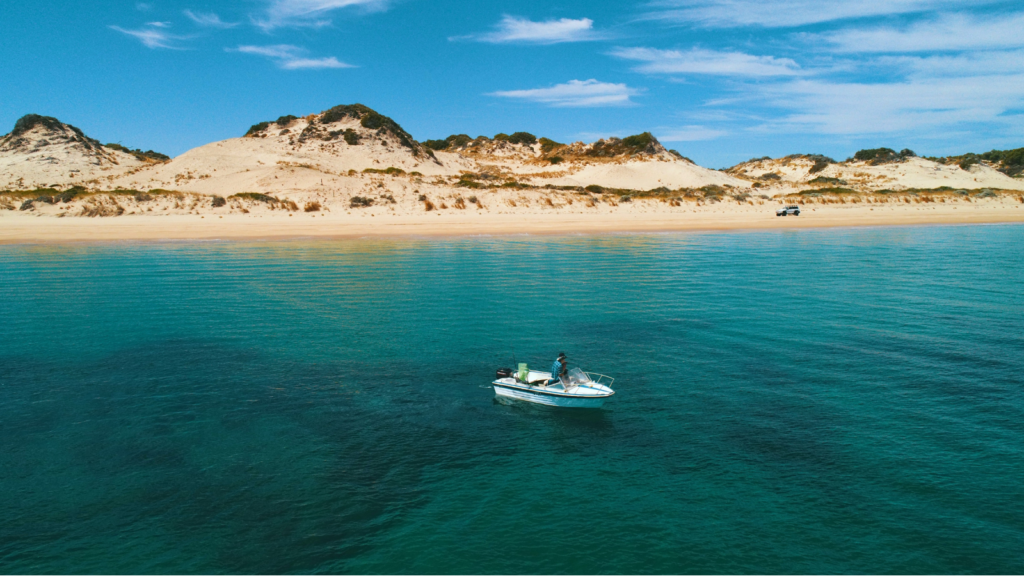Ready for a dose of nature‑powered fun? At Wellington Dam and National Park, you’ll dive into sweeping jarrah, marri and blackbutt forests, explore the dramatic Collie River Valley, splash in hidden river pools and wander scenic trails like the Jabitj Walk and the Sika Trail. Crowned by the world’s largest dam mural – Reflections, this spot is bursting with culture, adventure, and chill-out moments all within a stone’s throw of Collie. Whether you’re camping at Potters Gorge, grabbing a treat at the Kiosk, or soaking up sunset views from the Lookout, you’ll feel instantly connected, curious and utterly ready to play.
Wellington Dam and the Mega Mural
Wellington Dam is a significant landmark nestled within the scenic Wellington National Park. Constructed in 1933, the dam has played a vital role in supplying water for irrigation and domestic use in the region. It is renowned for its impressive 8,000 square metre mural titled “Reflections,” painted by artist Guido van Helten, which is considered the world’s largest dam mural. The mural depicts images inspired by local stories and photographs, celebrating the community and history of Collie.
Key Highlights
Wellington National Park
- This park is covered by 25,000 hectares of ancient jarrah, marri and blackbutt forest.
- In Spring time, come and see the diverse range of wildflowers, join a tour with Forest Explorers.
- Go to the Wellington Dam Lookout to see the largest mural on a Dam wall in the Souther Hemisphere.
Wellington Dam
- Second largest man-made reservoir in Western Australia, Lake Argyle is the largest.
- More than a hundred workers that built the wall, lived in a tiny settlement of tents pitched in a forest clearing (now the Kiosk at the Dam and surrounding car parks).
- The dam’s storage capacity has twice been enlarged to meet demand.
- When the dam overflows it creates a spectacular lace curtain effect.
Just 2.5 hours south of Perth, Wellington Dam and National Park invites you to explore towering forest trails, paddle calm waters, and witness one of the world’s largest outdoor artworks all in one unforgettable destination.
Things To Do
Scenic Bush Walks and Mountain Bike Trails:
For bike hire and trail transfers, contact Adventure Connections, located within the Wellington National Park.
- Wellington West Bike Trails
- Wellington East Bike Trails
- Wellington Hike Trails
- Honeymoon Pool Kayak Trail
Water Sports:
- Kayaking
- Canoeing
- Fishing (must have licence)
- Water Skiing at Potters Gorge
- Swimming at Long Pool and Honeymoon Pool
Activities:
- Bird Spotting
- Wildflowers
- Abseiling and Rock Climbing at The Quarry
Food and Beverage:
- Visit the Kiosk at the Dam Cafe for lunch
Picnics:
- Enjoy gas BBQs, picnic tables, and accessible toilets near the Kiosk.
- Visit The Quarry, just below the Kiosk for heritage-based scenic picnics.
- Other Picnic Locations include Big Rock, Little Rock, Rapids, Long Pool, Honeymoon Pool and Potters Gorge.
Camping:
Bookings must be made through Park Stay WA.
Visitor Information
Admission Fees
- Free Entry
Facilities
- Bike Amenities
- Carpark
- Coach/Bus Parking
- Family Friendly
- Toilets
- Picnic Tables
Other
- Pets are not allowed within the Wellington National Park.
Testimonial
“I went to Wellington Dam in WA and had a great time. The mural on the dam wall is massive and really impressive up close. We explored the forest trails, stopped at lookouts, and just enjoyed the peaceful surroundings. The sound of flowing water and fresh bush air made it a perfect escape. I’d definitely recommend this place to anyone who enjoys being out in nature—it’s a relaxing spot that’s worth the trip.” Google Review
Related Links
Please go to Water Corporation website for updates on ongoing works within the Wellington National Park – Wellington Dam Road Bridge Upgrade.


